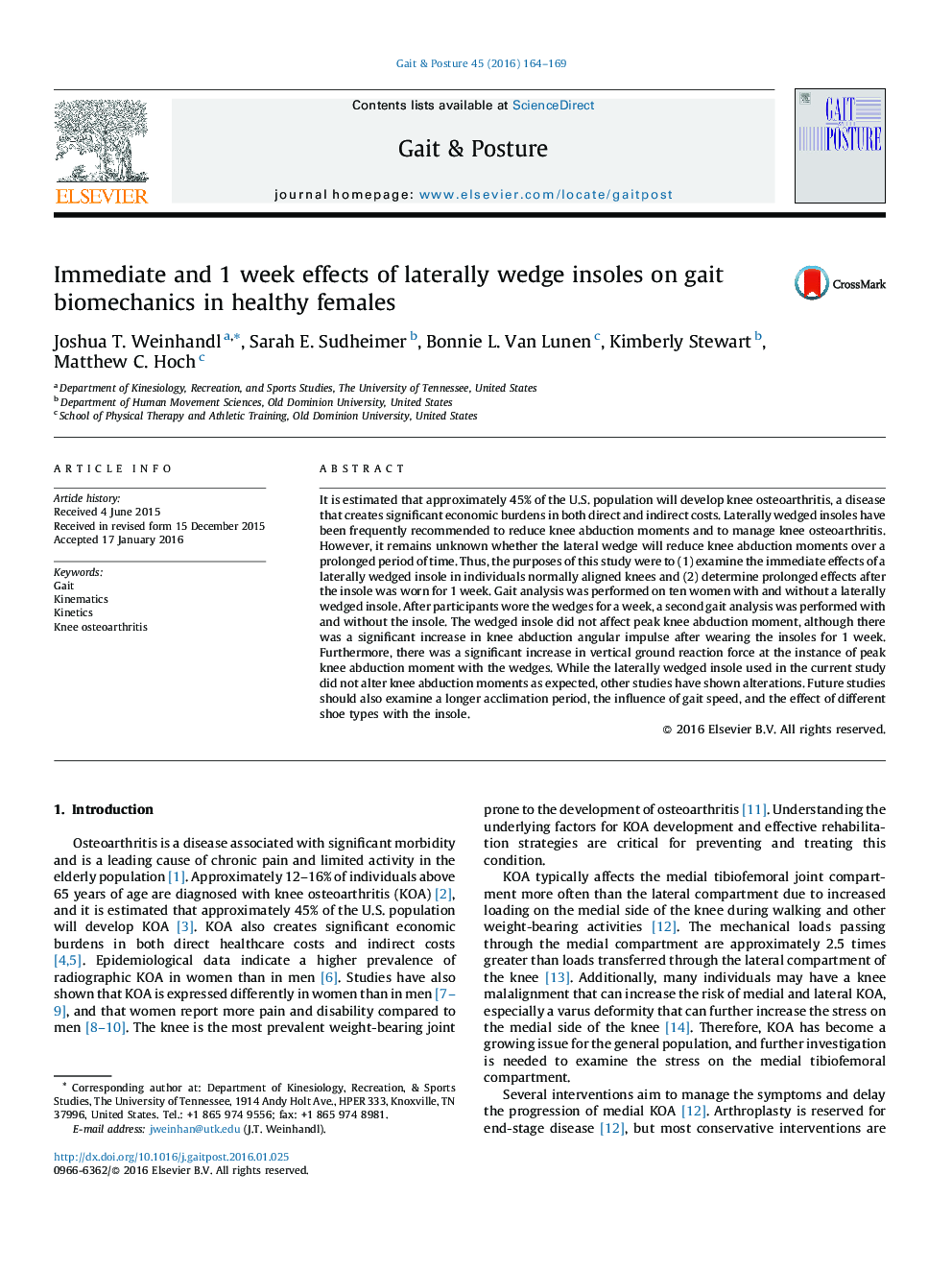| Article ID | Journal | Published Year | Pages | File Type |
|---|---|---|---|---|
| 4055999 | Gait & Posture | 2016 | 6 Pages |
•Gait analysis was performed before and after wearing a laterally wedged insole for 1 week.•The wedges increased knee flexion range of motion but did not alter knee adduction or ankle eversion range of motion.•Knee abduction moments did not change as a result of the wedge insole.
It is estimated that approximately 45% of the U.S. population will develop knee osteoarthritis, a disease that creates significant economic burdens in both direct and indirect costs. Laterally wedged insoles have been frequently recommended to reduce knee abduction moments and to manage knee osteoarthritis. However, it remains unknown whether the lateral wedge will reduce knee abduction moments over a prolonged period of time. Thus, the purposes of this study were to (1) examine the immediate effects of a laterally wedged insole in individuals normally aligned knees and (2) determine prolonged effects after the insole was worn for 1 week. Gait analysis was performed on ten women with and without a laterally wedged insole. After participants wore the wedges for a week, a second gait analysis was performed with and without the insole. The wedged insole did not affect peak knee abduction moment, although there was a significant increase in knee abduction angular impulse after wearing the insoles for 1 week. Furthermore, there was a significant increase in vertical ground reaction force at the instance of peak knee abduction moment with the wedges. While the laterally wedged insole used in the current study did not alter knee abduction moments as expected, other studies have shown alterations. Future studies should also examine a longer acclimation period, the influence of gait speed, and the effect of different shoe types with the insole.
